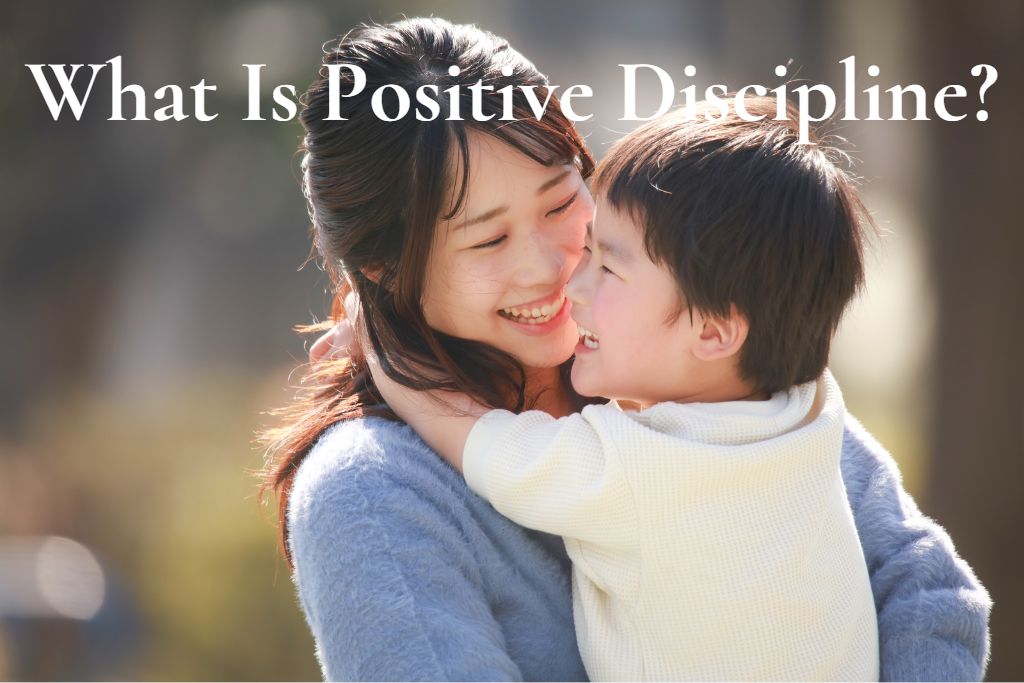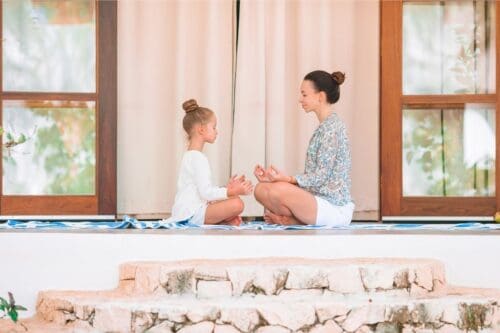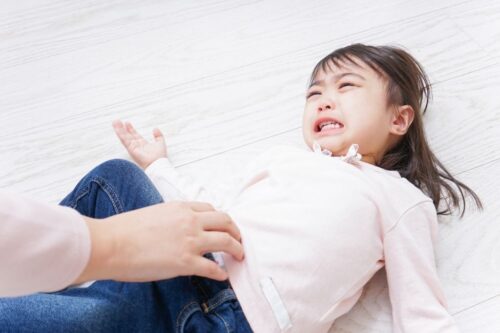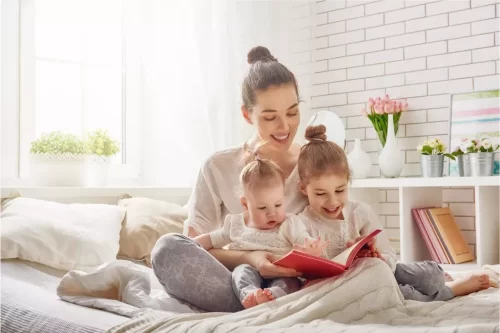What Is Positive Discipline?
Positive Discipline is a discipline and parenting model developed by Dr. Jane Nelsen in the early 1980s, based on the work of psychologists Alfred Adler and Rudolf Dreikurs.
The goal of Positive Discipline is to raise children who are responsible, respectful, and resourceful members of society. There is a focus on teaching social and life skills in respectful and encouraging ways, without the use of bribes and punishments.
Table of Contents
Who Were Adler and Dreikurs?
Alfred Adler was an Austrian medical doctor and psychotherapist, and founder of Adlerian Psychology, sometimes also called Individual Psychology. At the core of Adler’s work were equality, mutual respect, democracy, and the human need to contribute. Adler put forth the premise that all humans have two basic needs: to belong and to feel significant. Through his work, Adler changed the direction of modern psychology.
Rudolf Dreikurs, also a psychiatrist from the University of Vienna, continued Adler’s work and developed pragmatic methods to apply individual psychology principles to parenting and teaching. His theory was that misbehavior is due to a lack of sense of belonging and that the only way to change misbehavior is through encouragement. Dreikurs also introduced the idea that children are not bad for behaving badly.
When a child makes a mistake or fails to accomplish a certain goal, we must avoid any word or action which indicates that we consider him a failure. ‘Too bad that didn’t work.’ ‘I’m sorry it didn’t work out for you.’ We need to separate the deed from the doer.
Rudolf Dreikurs
Adler and Dreikurs advocated for a parenting style that was democratic, in which children were treated with dignity and respect. They put forth the idea that children could be encouraged to change their misbehavior without punishments and rewards. These ideas were first presented in the United States in the early 1920s, at a time when physical punishments and a strict hierarchical parent-child relationship were the norms.
Positive Discipline Is Born
Dr. Jane Nelsen further developed the work of Adler and Dreikurs by creating Positive Discipline with over 50 practical tools for parents and teachers. She began presenting her work in the 1980s through a series of workshops, manuals, and books. Since then, she has trained thousands of parent educators, and the Positive Discipline classroom management model is used in many private, religious, and public elementary schools.
[Disclosure: This article contains affiliate links, which means I earn a small commission, at no extra cost to you, if you make a purchase using the links below. Please read my affiliate disclaimer for more information. Your purchase using the links below supports the creation of new content on this website.]
Since 1981, Dr. Jane Nelsen has published many books on Positive Discipline for different age groups and family settings. A good book to start with is Positive Discipline – The Classic Guide to Helping Children Develop Self-Discipline, Responsibility, Cooperation, and Problem-Solving Skills. For an in-depth guide to all Positive Discipline tools, consider Positive Discipline Parenting Tools. And for solutions to specific issues that come up, you will find Positive Discipline A-Z helpful.
The Five Criteria for Positive Discipline
The five criteria at the core of Positive Discipline, based on the principles of Adlerian Psychology, are:
- Being Kind and Firm at the same time – Positive Discipline is mutually respectful and encouraging.
- Helping children feel a sense of Belonging and Significance – Positive Discipline fosters connection.
- Long-Term Effectiveness – Punishment works short-term, but has negative long-term results.
- Teaching valuable Social and Life Skills for a good character – Respect, concern for others, problem-solving, cooperation, and contributing to the home, school, or larger community.
- Inviting children to discover how Capable they are and to use their personal power in constructive ways.
By focusing on these five criteria in our parenting interactions with our children, we learn to be kind and firm at the same time, without punishing or being permissive. Children behave their best when they feel connected to and loved by their caregivers. And we feel the most confident as parents when we are clear about our goals and expectations and know how to follow through with empathy.
Where did we ever get the crazy idea that in order to make children do better, first we have to make them feel worse? Think of the last time you felt humiliated or treated unfairly. Did you feel like cooperating or doing better?
Dr. Jane Nelsen
Positive Discipline Tools
As I mentioned above, there are over 50 Positive Discipline tools that can be applied to different parenting challenges. All tools are interconnected and build on each other.
The tools of Positive Discipline are based on:
- Mutual respect
- Identifying the belief behind the behavior. Effective discipline requires us to look at what’s driving the children’s behavior instead of focusing only on changing behaviors superficially.
- Effective communication and problem-solving skills
- Discipline that teaches (and is neither permissive nor punitive)
- Focusing on solutions instead of punishment.
- Encouragement (instead of praise and rewards)
Some of the tools are:
- Connection before correction
- Control your behavior
- Curiosity questions
- Encouragement vs. praise
- Eye to eye
- Family meetings
- Focus on solutions
- Follow through
- Kind and firm
- Letting go
- Limited choices
- Natural Consequences
- Positive Time-Out
- Recovery from mistakes
- Routines
- Silent signals
- Special Time
- Take time for training
- Understand the brain
- Validate feelings
- Wheel of choice, and many more.
Many of the tools we learn in Positive Discipline have to do with us parents learning new attitudes and shaping our own mindset. We have to learn to understand our emotions and triggers, control our behavior, resist engaging in backtalk, follow through on our commitments, and let go of control.
Does Positive Discipline Work?
The Positive Discipline model is supported by ongoing research.
Studies have shown that children do better when they perceive both kindness and firmness from their parents. Such children succeed better socially and academically. They engage less in socially risky behaviors (Aquilino, 2001; Baumrind, 1991; Jackson et al., 1998; Radziszewska et al 1996; Simons-Morton et al, 2001), have better academic performance (Cohen, 1997; Deslandes, 1997; Dornbusch et al., 1987; Lam, 1997), and better outcomes even when they come from a single-parent or economically disadvantaged home (Lam, 1997).
Other studies have shown how having a sense of connectedness with their family was a protective factor against most health risk behaviors for young people (Resnick et. al. 1997).
A democratic model of parenting takes more work and more time, but it gets easier with time. And our relationship with our children is protected. At the end of the day, what we all want most out of parenting is to maintain a close and healthy relationship with our children into their adulthood.
How to Get Started With Positive Discipline?
Here are a few ideas to help you get started with Positive Discipline:
1. Control your behavior and repair
The first thing to do when starting with Positive Discipline is to control our own reactions. Blowing up at our kids whenever they do something we don’t like is not an effective discipline strategy.
Only when we are emotionally regulated, we can be ready to apply the Positive Discipline tools effectively to teach our children life skills that serve them in the long run.
By controlling our own behavior we model for our children and teach them what we expect of them. We learn what our triggers are and practice breathing and calming techniques. And when we do make mistakes, we apologize to our children.
We recognize the mistake with a feeling of responsibility, offer a sincere apology, and work on finding respectful solutions.
2. Focus on being kind and firm
We model firmness by respecting ourselves and the needs of the situation. What this means is having clear expectations that we communicate to our child. We have personal boundaries that we are not afraid to protect. And we follow through with what we say we are going to do.
Kindness is the way we interact and connect with our children, honoring their dignity and respecting their needs. That means showing empathy when our children dislike our boundaries or limits and offering them the support they need to meet our expectations.
3. Seek to understand the meaning behind behaviors
Every human being behaves the way they do for a reason. There’s always an explanation behind everything we do. Our children are no different.
When we rush to judge our children’s behaviors by how they make us feel, we miss the opportunity to meet their needs.
A misbehaving child is a discouraged child. Each child needs continuous encouragement, just as a plant needs water.
Rudolf Dreikurs
All children want to do well. And when they don’t do well, it’s because that’s the best they can do at that time. It is our job to figure out what drives our children’s behavior. And then to find the solution to that problem. Is it an emotional need? Is it a skill that they’re missing? Is it the environment that overwhelms them? Do they need more autonomy?
4. Focus on solutions
Focusing on solutions is for both parents and children. It helps us to stay centered on what’s important.
Related: Are You Looking for Blame or Solutions?
When we focus on solutions, we eliminate unhelpful blame, pain, and shame. The question that is most helpful for us to remember in the moment is this: Am I trying to cause pain to my child or to teach them a lesson? When we spank, yell, isolate, or reject our children, the message they get is that they are unlovable and the bigger and stronger person always hurts the little one and they always win.
Related: Problem-Solve With Curiosity
As for children, when mistakes are viewed as opportunities to learn, children develop compassion for themselves and others, and they learn to take responsibility for their actions. They become problem-solvers and develop a healthy view of themselves as part of a community, which begins within the family.
5. Treat everyone as equally deserving of respect
When we use Positive Discipline, our approach to parenting isn’t top-down. We don’t yell, punish, humiliate, shame, or bribe with rewards. Instead, we view our children as equal humans to ourselves and offer them the same love, empathy, respect, and appreciation that we would like to receive.
We make an effort to listen to our children and allow them to express the full range of human emotions. We understand that they are capable of learning and contributing, we communicate this to them and treat them accordingly. We help develop their agency by problem-solving together and involving them in age-appropriate decisions that affect their lives.
The Last Thing You Need to Know
This type of discipline is not a quick fix. It takes a lot of time and effort. We have to consistently spend plenty of time talking with our children, teaching them life and social skills, breaking everything down into small steps, and offering them lots of practice. We also have to work on ourselves and our own self-care and self-regulation so we can show up as kind and firm leaders for our kids.
But the good news is that children raised with Positive Discipline have much better outcomes, as proven by research, than children from authoritarian or permissive families. And if we trust this process, we can do it.







